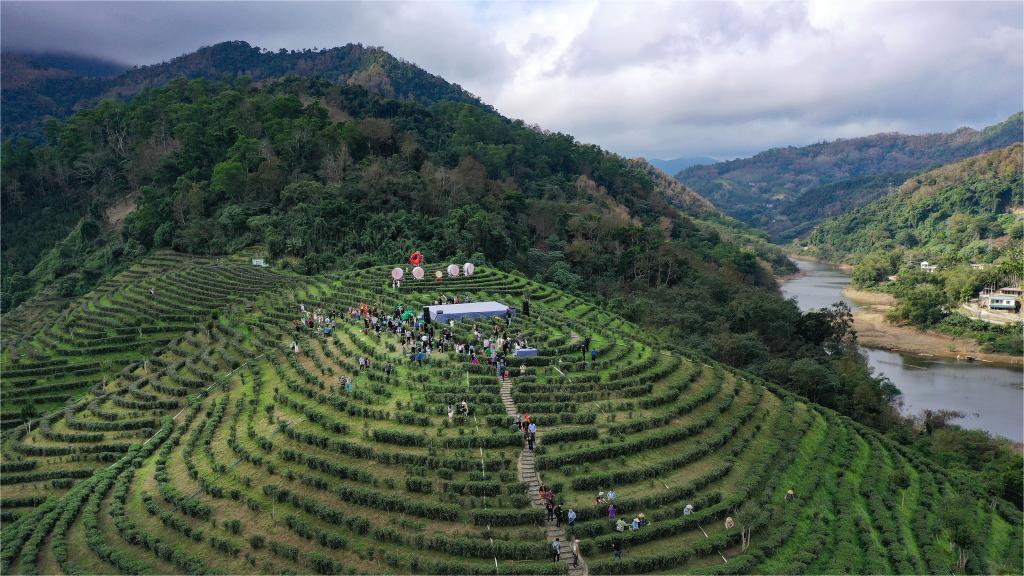Talented male embroiderer promotes Uygur embroidery, leads fellow villagers to prosperity
Using his nimble fingers, Kader Rahman, a 50-year-old male inheritor of traditional Uygur embroidery in Hami city, northwest China's Xinjiang Uygur Autonomous Region, has secured a happy and fulfilling life for himself while at the same time leading his fellow villagers to prosperity.
A historical stop along the ancient Silk Road, Hami city is known for its time-honored Uygur embroidery craft. Skilled local Uygur embroiderers often adorn hats, collars, cuffs, pillows, and bedclothes with exquisite patterns of flowers, grass, trees, and landscapes.
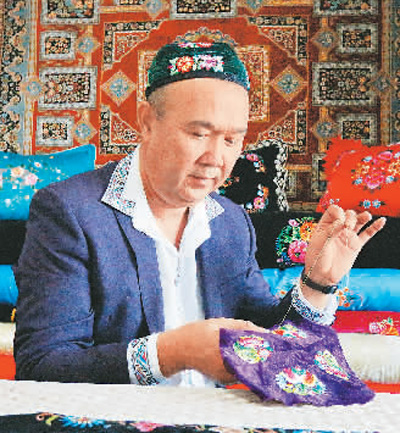
Kader Rahman, an inheritor of traditional Uygur embroidery in Hami city, northwest China's Xinjiang Uygur Autonomous Region, makes an embroidery handicraft. (Photo courtesy of Dawuti Rexiati)
Kader was born into a family that also values the tradition of Uygur embroidery. Growing up watching his mother and elder sister make various embroidery handicrafts, Kader showed an extraordinary gift for the craft when he was young.
At the age of 6, he designed and cut out an embroidery pattern on his own for the first time. The pattern was then turned into a handicraft by his mother and purchased by a customer.
As he was the only male embroiderer in his village of Qiaomaizhuangzi, Taojiagong township, Hami city, Kader faced ridicule for his interest in embroidery, which is traditionally believed to be a woman's job. But his enthusiasm for the craft never waned.
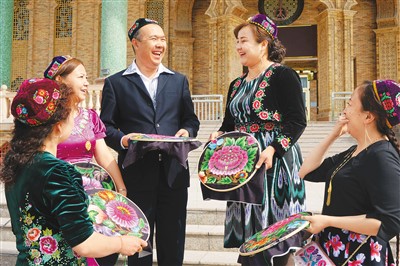
Kader Rahman (middle), an inheritor of traditional Uygur embroidery in Hami city, northwest China's Xinjiang Uygur Autonomous Region, talks about embroidery techniques with embroiderers. (Photo/Pulati)
In 2008, Uygur embroidery was designated as a national-level intangible cultural heritage. The news became a great source of encouragement to Kader.
In the next year, 10 of Kader's embroidery works displayed at a folk art exhibition impressed experts, who were surprised to learn they were made by a man.
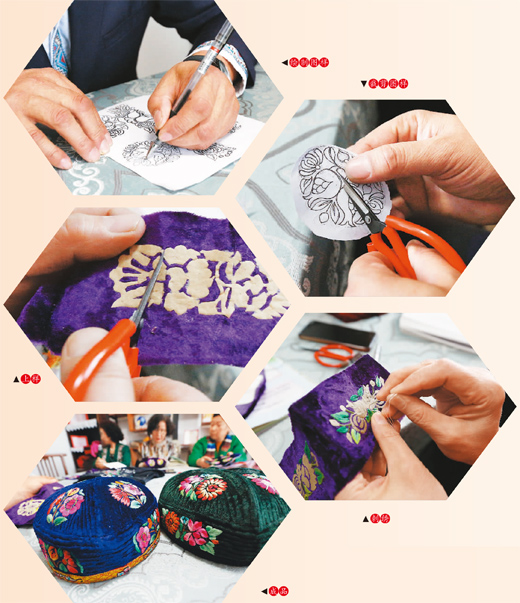
Photo shows the process of making a traditional Uygur hat. (Photo courtesy of Dawuti Rexiati)
"Since then, more people have learned my name and my fellow villagers gradually accepted who I am," Kader said, adding that the number of orders for his works has also grown since the exhibition was held.
Kader has taken his craftsmanship to new levels through a training program initiated by China's Ministry of Culture and Ministry of Education for inheritors of intangible cultural heritage in 2015.
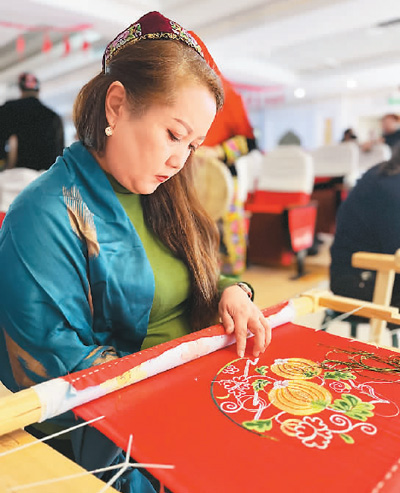
A member of the professional embroidery team led by Kader Rahman, an inheritor of traditional Uygur embroidery in Hami city, northwest China's Xinjiang Uygur Autonomous Region, embroiders patterns with a Hami melon motif on a piece of cloth. (People's Daily Overseas Edition/Sun Yi)
As one of the trainees of the first training session for Hami Uygur embroidery held in Guangzhou University in Guangzhou, south China's Guangdong Province, Kader learned the techniques of the four most famous embroidering styles in China, integrating them with the traditional Uygur embroidery techniques to create innovative designs.
He has also opened an embroidery and paper-cutting training agency under the support of a traditional craft work station in Hami, the first of its kind established by the Ministry of Culture and Ministry of Education in China. The agency has trained more than 3,000 embroiderers to date.
In addition, he leads a professional team consisting of more than 30 skilled embroiderers. The team realizes more than 1,000 orders annually, helping embroiderers shake off poverty and embrace better lives.
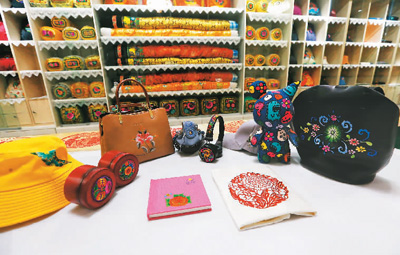
Photo shows some of the cultural and creative embroidery products designed and crafted by Kader Rahman, an inheritor of traditional Uygur embroidery in Hami city, northwest China's Xinjiang Uygur Autonomous Region. (Photo courtesy of Dawuti Rexiati)
"As long as you keep working hard, your flower will finally blossom one day," Kader said, noting that intangible cultural heritage inheritors and ordinary embroiderers are both important driving forces for the innovative development of Hami's Uygur embroidery.
"Now all our flowers are blooming," he said happily.
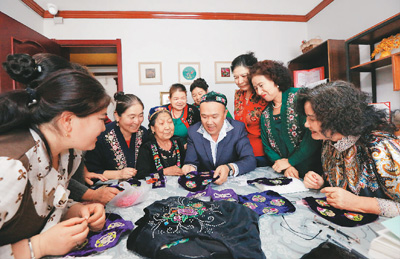
Kader Rahman (middle), an inheritor of traditional Uygur embroidery in Hami city, northwest China's Xinjiang Uygur Autonomous Region, talks about embroidery techniques with embroiderers. (Photo courtesy of Dawuti Rexiati)
Photos
Related Stories
- Ancient Li brocade tradition sees resurgence in popularity
- Inheritor committed to passing on craft of Wuxi fine embroidery in E China's Jiangsu
- Chinese embroidery artist takes ethnic cultural heritages to world
- Company in China's Henan sells wedding embroideries abroad
- Embroidery cooperative dedicated to inheritance of Kirgiz embroidery in NW China's Xinjiang
- Hard-of-hearing embroiderer from NW China's Xinjiang wins global recognition
Copyright © 2024 People's Daily Online. All Rights Reserved.







